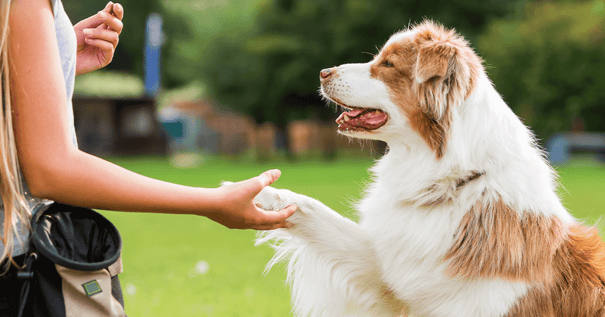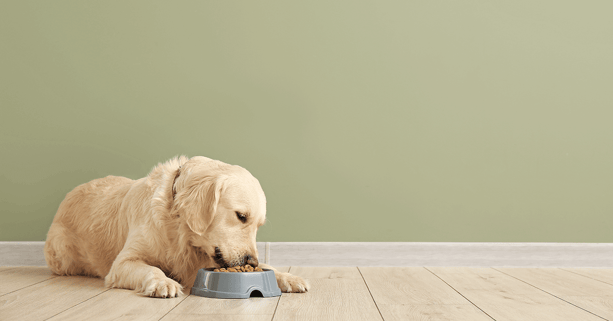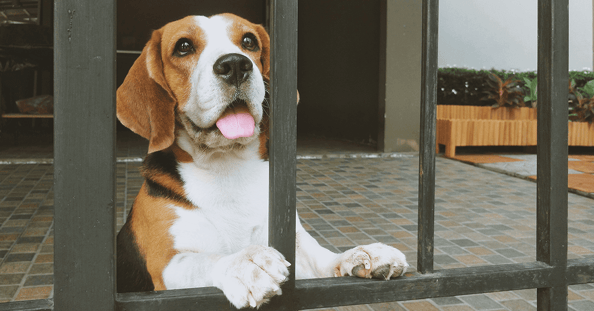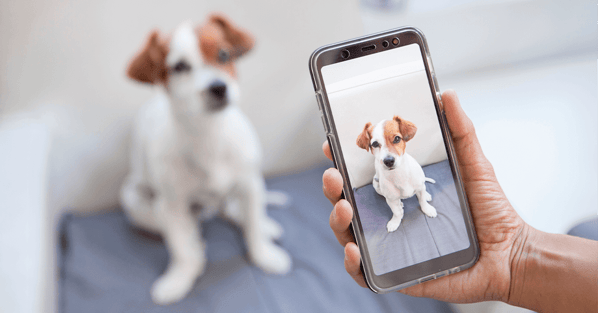Pet sitting involves all of a dog’s normal routines. These include feeding, exercise and mental stimulation as well as keeping them safe and healthy. But when it comes to dogs with separation anxiety or general nervousness, time away from caregivers can be very daunting. And as for the person taking care of them, it can make the job a little more difficult.
Whether you’re a friend, family member, or there on a professional basis, all pet sitters should find out a dog’s routine and preferences before starting to care for them. We’ve put together some key dog sitting tips below for caring for more anxious dogs along with some general advice. This is so that you can learn some extra pointers for all pet sitting occasions that are handy to know!
1. Have an introductory meeting
If you don’t already know the dog you are caring for, make sure you have had an introductory meeting before your time of care. Meeting up beforehand is always advised as it gives you the chance to get to know your temporary furry companion. Especially if they are an anxious dog, the pre-sitting meet-up will help to start building the bond. This also gives you the opportunity to see how they respond to you.
It may be useful to visit them a few times both inside and outside the home. If you find you don’t feel comfortable, then it’s best to turn down the offer of pet-sitting all together. After all, caregivers want to ensure the person caring for their four-legged friend is the most suitable fit.

2. Know their medical and dietary needs
A more general dog sitting tip is to make sure you are fully aware of dietary requirements or known medical conditions. Having the contact details of the dog’s vet will also be useful.
Although the caregivers should leave the food supplies needed, if their trip is unexpectedly prolonged, it’s good to know what and where to get their meals from. Dogs are sensitive to foods that we, as humans, can eat just fine. So, be careful not to disrupt their normal dietary routine, and remember that dogs like to have their meals at regular set times.

3. Understand what triggers their behaviour
Understanding what a nervous dog finds challenging is key to maximizing the quality of the care you provide. Is it spending time alone or do they find thunderstorms scary? Find out what their family usually do to support them at these times.
If you’re not too sure on how to help a dog with separation anxiety, check out this blog for more advice.
4. Have a spare key for backup
No matter the time of the year, for anyone pet-sitting, it’s always good to have a spare key as backup. It may be wise for the caregivers to leave a spare key with the neighbours too, in case you get locked out. The last thing you want is to end up in a sticky situation!

Make sure the home has a safe place for the dog to rest in. Nervous dogs often find comfort in these “safe space” areas. If you are house sitting too, this will be their familiar space, so it is important to respect their bed/resting areas as places they can go to and be undisturbed.
If the dog is coming to stay with you, make sure they have a dedicated space to rest undisturbed. You can do this by making it nice and comfy with their bedding (smells of home) in a quiet place. Our ADAPTIL Calm pheromone diffusers for dogs are also a great idea. Simply plug this in near to their bed and let the natural calming messages take effect.
Extra tip! Summer dog care can be more challenging due to the hotter conditions. So just be sure that they are both in a cool environment with good ventilation.
5. Find out what training they have received
All dogs are different and so is the way they have been trained by their caregivers. Be sure to ask their pet parent for their cues and any house rules, such as not sitting on the sofa. This dog sitting tip is particularly useful for helping a more anxious dog to feel comfortable and understand what you are asking. Sticking to their usual habits also ensures you won’t confuse them.

6. Keep the parents posted
Last but not least, let their family know how they are getting on. A photo or video will let them see for themselves! Check how often they want to receive updates and capture their fun moments. From walks to the park, to lounging around in the shade in the garden, owners will always be curious of what their dogs are up to.
 Looking After a Dog With Separation Anxiety – How to Help
Looking After a Dog With Separation Anxiety – How to Help
Looking after a dog with separation anxiety can often be challenging. But there are ways you can help minimize their stress!
Spending time together is one of the best methods for supporting a dog with separation anxiety. Your presence as their dog sitter will be reassuring and prevent them from feeling alone. Spend time doing all the things they love, such as walks, playing games, and practicing tricks to help distract them from their caregiver’s absence. On the whole, it’s best to avoid leaving them on their own.
For more tips and advice on puppy care and general guidance for anxious dogs, sign up to our ADAPTIL newsletter! Not sure which of our products is most suitable for your pooch? Take our quick and free online quiz to learn more. You can also get in touch by calling 1-800-510-8864 or emailing us.




